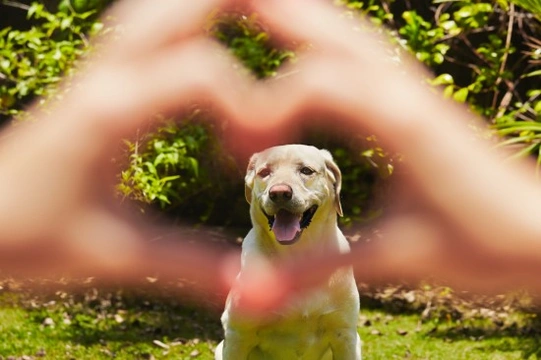
Why co-dependency with your dog is a bad idea
While you may not be fully aware of the meaning of co-dependency, most of us have at least a vague idea of this generally being a bad thing that does not do any good for either of the parties involved. Co-dependency is something that we usually think of as occurring in relationships between two different people, but it can also occur between a dog and their owner as well.
In its simplest terms, co-dependence can be explained as a relationship based on an unhealthy level of interpersonal reliance, where neither party feels secure and able to function properly without the other. When not together, either party may experience separation anxiety and difficulty being alone, resulting in a mutually clingy behaviour pattern that does neither party any good!
Once a dog becomes used to having constant companionship and never being left alone, they will soon begin to display separation anxiety if they do have to be alone. This in turn causes the co-dependent owner to anthropomorphise the separation anxiety that the dog is displaying, ascribing human emotions and logical deduction processes to the dog and so, creating a vicious circle that can be hard to break.
If you are worried that yourself and your dog are too reliant on each other and one or both of you cannot be happy for a while on your own, it is time to address this and nip it in the bud as soon as possible. Read on to learn more.
Identifying co-dependency
Being able to objectively examine your relationship with your dog and identify potential co-dependency can be difficult to do, but it is important not to let it get the better of you! It is nice and in many ways, very very good for your dog if you spend a lot of time with them and are able to take them with you to most places that you go. However, it is important that you can also leave your dog on their own when needed without feeling anxious or bad about it, and without your dog getting anxious because they are not able to be left.
If you will not leave your dog alone and avoid going to places where you cannot take your dog for fear of upsetting them by leaving them alone, this is potentially a problem. If you allow your dog to sit on the sofa or sleep on the bed and will not move them even when it is inconvenient or problematic, this is another indicator.
This type of behaviour and lack of boundaries on the part of the owner will soon lead to separation anxiety and unhappiness in the dog when they do need to be left alone or not involved in everything, and does both you and your dog a great disservice.
What causes co-dependency between a dog and their owner?
One of the main causes of co-dependency is a tendency by some people to anthropomorphise their dog, assigning human feelings, thought processes and emotions to them rather than thinking of them as and treating them as the dog that they are. If you think of your dog as your baby and treat them accordingly, you may be in danger of co-dependency.
This type of problem can start innocently enough, by the owner beginning to read too much into their dog’s actions and expressions. Letting a dog get away with not obeying commands, failing to treat them like a dog because you are reading things and emotions that are not there into their expressions, and resisting every opportunity to leave your dog alone can all lead to separation anxiety and a blurred line in terms of appropriate canine behaviour.
Why is co-dependency a problem?
It is fair to say that co-dependency of this type is a problem for both the owner and the dog. If your living situation and the way that you conduct your life is solely based on working around your dog far beyond the point of taking care of their real needs, then you may find yourself missing out on a lot that life has to offer, at the detriment of your relationships or potential relationships with other people.
For the dog too, while you may feel that you are being the best dog owner in the world and giving your dog the best life possible, the chances are that you are simply making their lives harder. As mentioned, co-dependency can lead to separation anxiety in the dog, and a lack of clear boundaries will make your dog feel insecure and unsettled. This then causes more clinginess, and reinforces the problem as a whole.
Retraining your dog and yourself
If you feel that the above paragraphs describe you and your relationship with your dog, now is the time to act! Before you can effectively retrain your dog, you must first retrain yourself, by making and keeping to clear boundaries with your dog, and putting these into action. Set up a proper routine for you and your dog, and begin to get them used to spending progressively longer periods of time alone, while you go out and do other things that you enjoy.
At the end of the day, treating your dog like a dog and taking care of all of their needs-including the need to be happy on their own- will ultimately benefit both of you.



